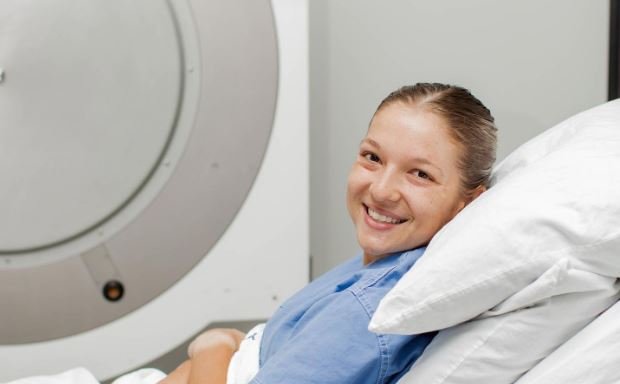Can You Sleep in a Hyperbaric Chamber Safely?
Introduction: Why the Question of Sleeping in a Hyperbaric Chamber Matters
Hyperbaric oxygen therapy (HBOT) has gained significant traction in recent years for treating a variety of health conditions—from wound healing and brain injuries to general wellness and anti-aging. As more people invest in at-home chambers, a new question is arising: Can you sleep in a hyperbaric chamber safely?
This article explores the medical science, risks, benefits, and practical considerations of extended stays—particularly overnight sleep—in a hyperbaric environment.
What Is a Hyperbaric Chamber and How Does It Work?
A hyperbaric chamber is a pressurized enclosure that allows users to breathe 100% oxygen at increased atmospheric pressures. This process helps saturate the body’s tissues with oxygen, accelerating healing and improving cellular function.
Key Benefits of Hyperbaric Oxygen:
- Stimulates collagen and skin regeneration
- Reduces inflammation and oxidative stress
- Improves circulation and angiogenesis
- Supports neurological recovery
- Enhances immune response
For an overview of the physiological benefits, explore Cleveland Clinic’s HBOT guide.
Is It Safe to Sleep in a Hyperbaric Chamber?
Sleeping inside a hyperbaric chamber is generally safe for short periods and under proper supervision. However, extended use requires strict protocols. Here’s what the evidence suggests:
Studies and Clinical Guidelines
There is limited clinical data on overnight hyperbaric exposure. However, research published by PubMed Central suggests that multiple daily sessions of HBOT (up to 90 minutes) are safe when conducted within recommended pressure ranges—typically 1.3 to 3.0 ATA.
Caution: Sleeping for 6–8 hours in a chamber could lead to risks like oxygen toxicity, barotrauma, or hypoventilation if not properly monitored.
Types of Hyperbaric Chambers Suitable for Sleeping
Not all chambers are built for long-duration sessions or sleep. Understanding the difference is crucial:
1. Soft-Shell Hyperbaric Chambers
- Operate at lower pressures (1.3 ATA)
- Designed for home use
- Generally considered safe for longer sessions, including sleep
2. Hard-Shell Hyperbaric Chambers
- Reach higher pressures (up to 3.0 ATA)
- Require medical supervision
- Not typically recommended for overnight stays
Learn more about the differences between soft and hard-shell chambers to determine what suits your needs best.
Health Benefits of Sleeping in a Hyperbaric Chamber
For those who use mild hyperbaric oxygen therapy (mHBOT), occasional overnight sessions may offer additional benefits:
Enhanced Cellular Repair
Overnight exposure may allow for extended mitochondrial rejuvenation and DNA repair.
Deep Tissue Oxygenation
Sleeping through the session enables prolonged tissue oxygen saturation, ideal for those with chronic conditions.
Immune Regulation
Longer oxygen exposure can modulate immune function, which is beneficial for autoimmune and inflammatory disorders.
Potential Risks of Sleeping in a Hyperbaric Chamber
While there are benefits, extended use also brings significant risks:
1. Oxygen Toxicity
Excessive oxygen levels over prolonged periods can lead to seizures and lung damage. This is especially true above 2.0 ATA.
2. Barotrauma
Prolonged exposure to pressure may harm the ears, sinuses, or lungs, particularly during sleep when pressure equalization is less controlled.
3. Thermal Discomfort
Body temperature can drop inside a hyperbaric chamber. Without proper thermal regulation, users may experience hypothermia symptoms.
4. Claustrophobia and Anxiety
Sleeping in a confined space for several hours may increase psychological stress, particularly for new users.
Best Practices for Safe Overnight Use
If you're considering sleeping in a hyperbaric chamber, follow these safety protocols:
Start with Shorter Sessions
Begin with 30–60 minute sessions and gradually increase. Use a timer to regulate exposure.
Use Mild Pressure Settings
Keep pressure below 1.5 ATA for extended durations, especially when unattended.
Install Oxygen Monitoring Devices
Real-time oxygen sensors and CO2 scrubbers are crucial for maintaining safe atmospheric conditions.
Consult a Medical Professional
Always consult a certified physician or hyperbaric technician before starting overnight use.
User Experiences: What Real Users Say
Anecdotal evidence from wellness forums and recovery clinics shows a growing number of people sleeping in mild hyperbaric chambers with good results. Users report:
- Better sleep quality
- Faster athletic recovery
- Improved cognitive clarity
However, these outcomes vary significantly based on individual health profiles, equipment quality, and session control.
When You Should Avoid Sleeping in a Hyperbaric Chamber
Avoid overnight use if you have:
- A history of seizures
- COPD or chronic lung issues
- Inner ear infections
- Recent surgeries involving air pockets (e.g., bowel surgery)
- Claustrophobia or PTSD symptoms
Legal and Regulatory Considerations
In the United States, FDA regulations apply to medical-grade hyperbaric chambers. At-home use of soft-shell models is not strictly regulated, but manufacturers must comply with safety standards.
Conclusion: Should You Sleep in a Hyperbaric Chamber?
Sleeping in a hyperbaric oxygen chamber can be safe if done correctly—under proper supervision, with mild pressure levels, and using FDA-compliant devices. While the idea may sound appealing for biohackers and health enthusiasts, long-term effects still lack conclusive research.

